November kicks off National Native American Heritage Month, also referred to as American Indian and Alaska Native Heritage Month, which is a time to celebrate the rich traditions, cultures and ongoing contributions of Native Americans.
If you are like me, you probably feel encouraged by the sort of wave happening where compassion and culture not only inform but also help connect one another.
More and more people seem to be opening up and sharing their stories, individual histories and traditions on a larger scale and as tough as these last few years have been, I am inspired by the amount of advocacy and community that has taken shape.
When I first came across award-winning Indigenous illustrator Michaela Goade, I was taken away by her whimsical illustrations and artistic style and knew that I had to share her work. Her beautiful, carefully placed layers of watercolors speak for themselves. Goade is native to Alaska and a part of the Tlingit and Haida Indian Tribes.
As I dug a bit deeper into her work, I was struck by this book, which won Goade the Caldecott Medal in 2021, making her the first Indigenous illustrator to receive the honor. The cover alone is powerful and the imagery is something that kids can immediately connect to.
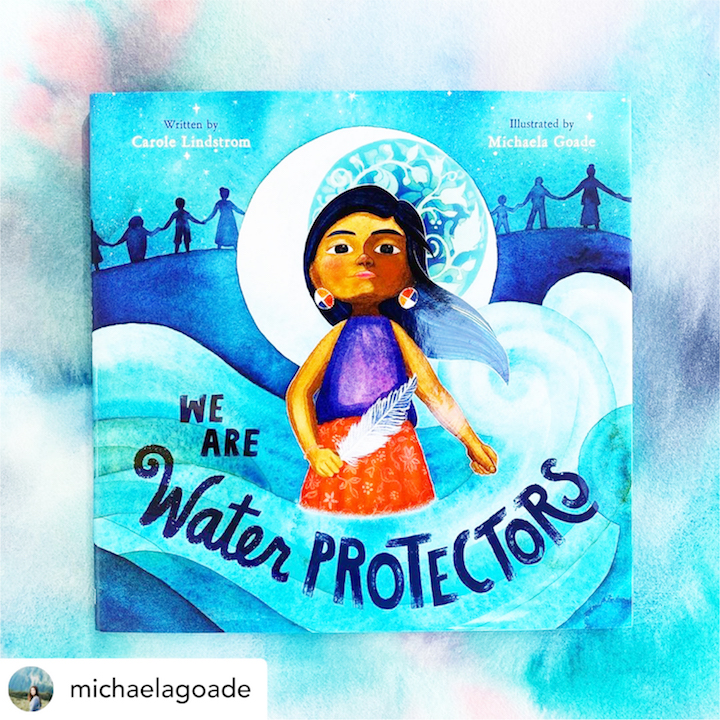
We Are Water Protectors was illustrated by Goade and written by Carole Lindstrom, who is Anishinaabe/Metis and is tribally enrolled with the Turtle Mountain Band of Ojibwe.
The story demonstrated the importance of protecting our environment, traditions and community. Goade brings each page to life with sweeping landscapes, designs and bold colors that swirl and melt together.
One of my favorite parts of the book is on the final page, where Lindstrom includes the “Earth Steward and Water Protector Pledge” that you can read out loud to your class. It’s a short poem that talks about protecting all living things, the water and the Earth by treating them with “kindness and respect.”
Helping children learn about cultures, experiences and emotions communicated through art is something that we, as art teachers get to do.
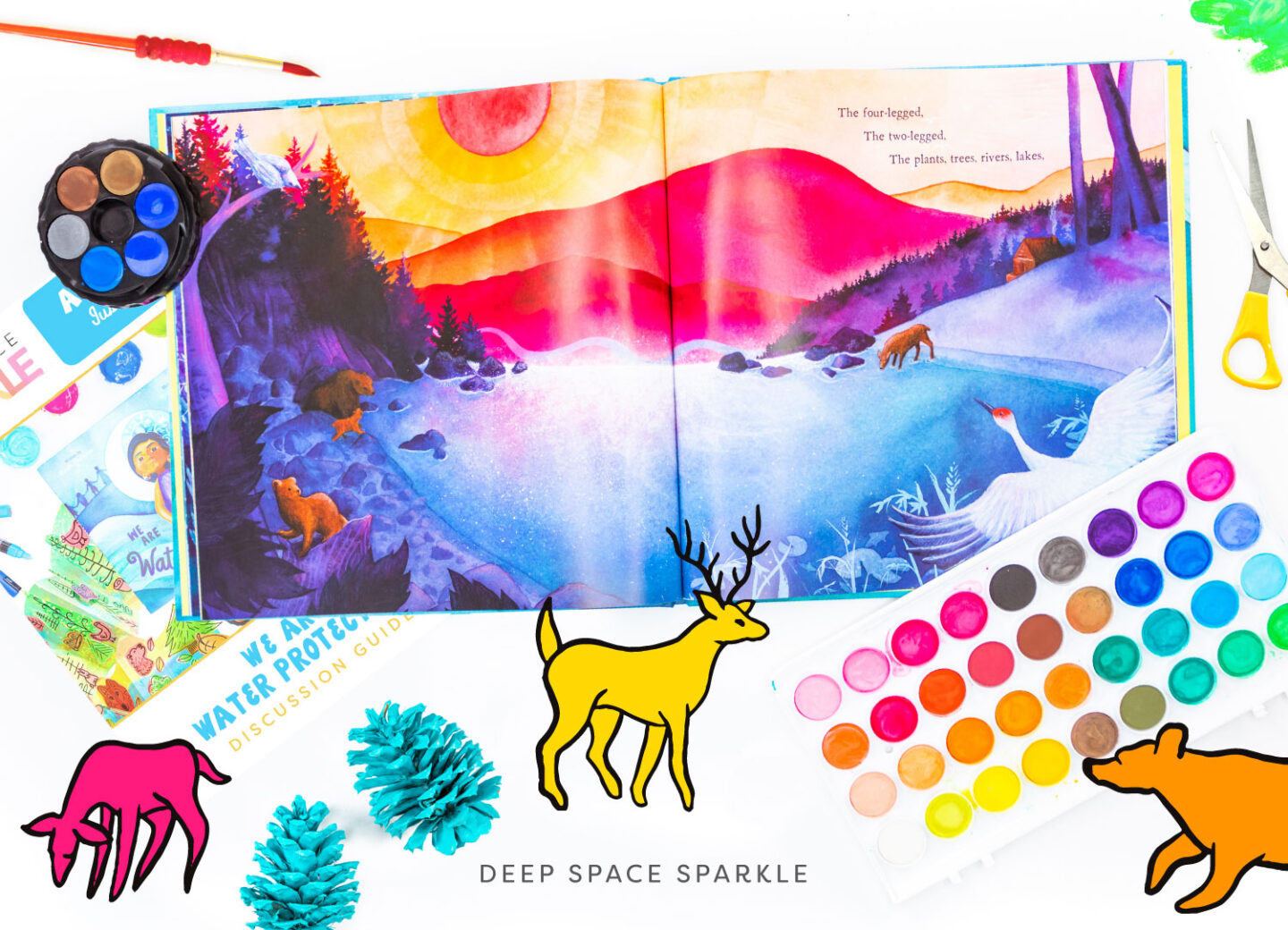
When reading We Are Water Protectors, students come face to face with the ongoing issues of the Dakota pipeline and what they mean especially to Native communities. Increasing this awareness, not only helps students build connections but also cultivate empathy.
To help get you started with this, we’ve included a book discussion guide below. Each question is meant to promote mindfulness and assist students in processing the story while promoting respect for cultural traditions and environmental stewardship as presented in the story.
Another way that I have celebrated this month in my classroom has been by pairing We Are Grateful: Otsaliheliga, written by Cherokee author Traci Sorell and illustrated by Franne Lessac with a project. In this book, Sorell offers a glimpse into Cherokee culture and the Cherokee expression of gratitude for things throughout each season of the year. Read about it more here.
We hope that you can use these resources during National Native American Heritage Month or at any other point in the year to introduce your students to an amazing Indigenous author and illustrator, generate important conversations in your art room and create meaningful artwork throughout the process.
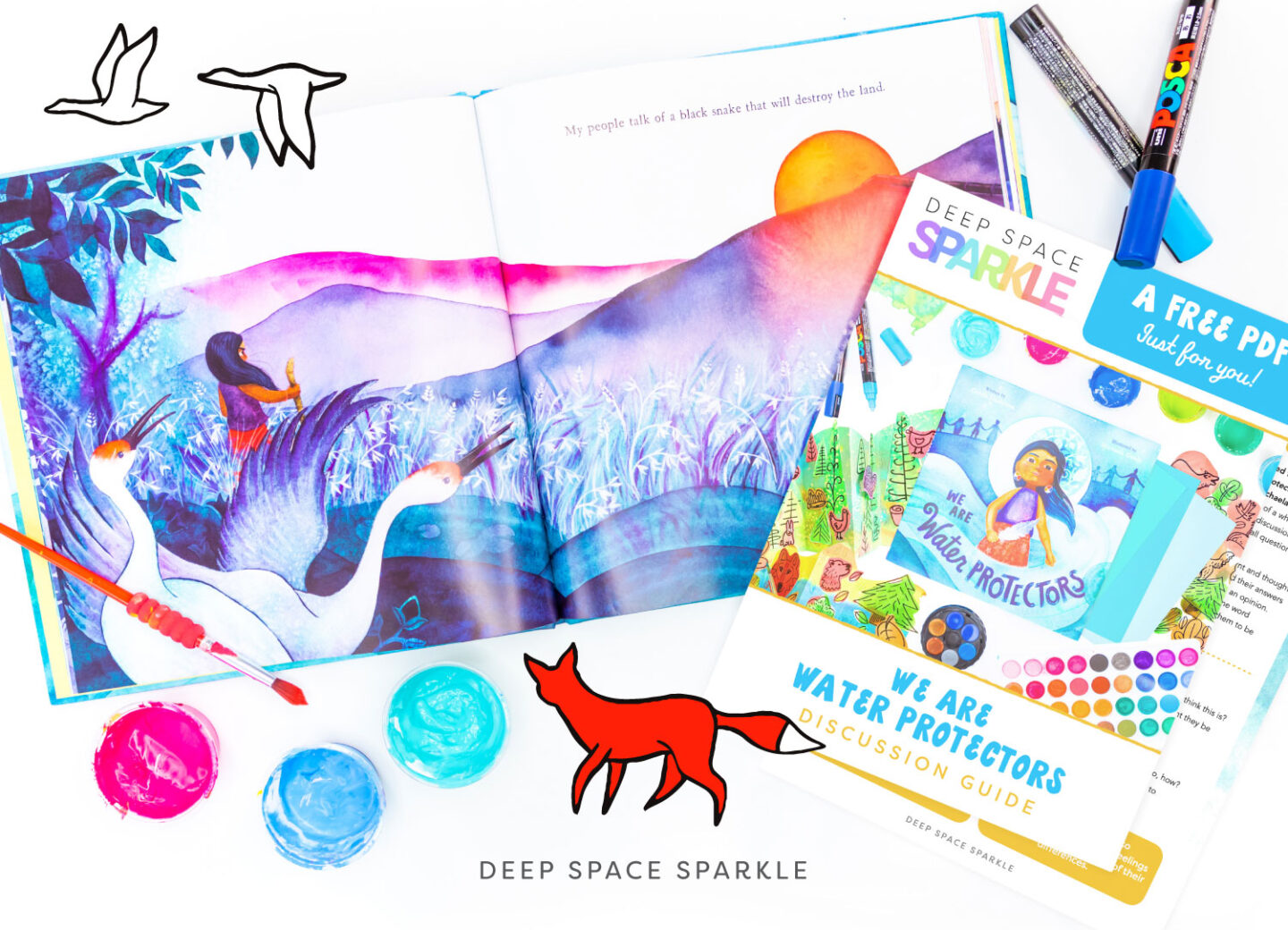
Not a Sparkler? Join the waitlist here and learn more.
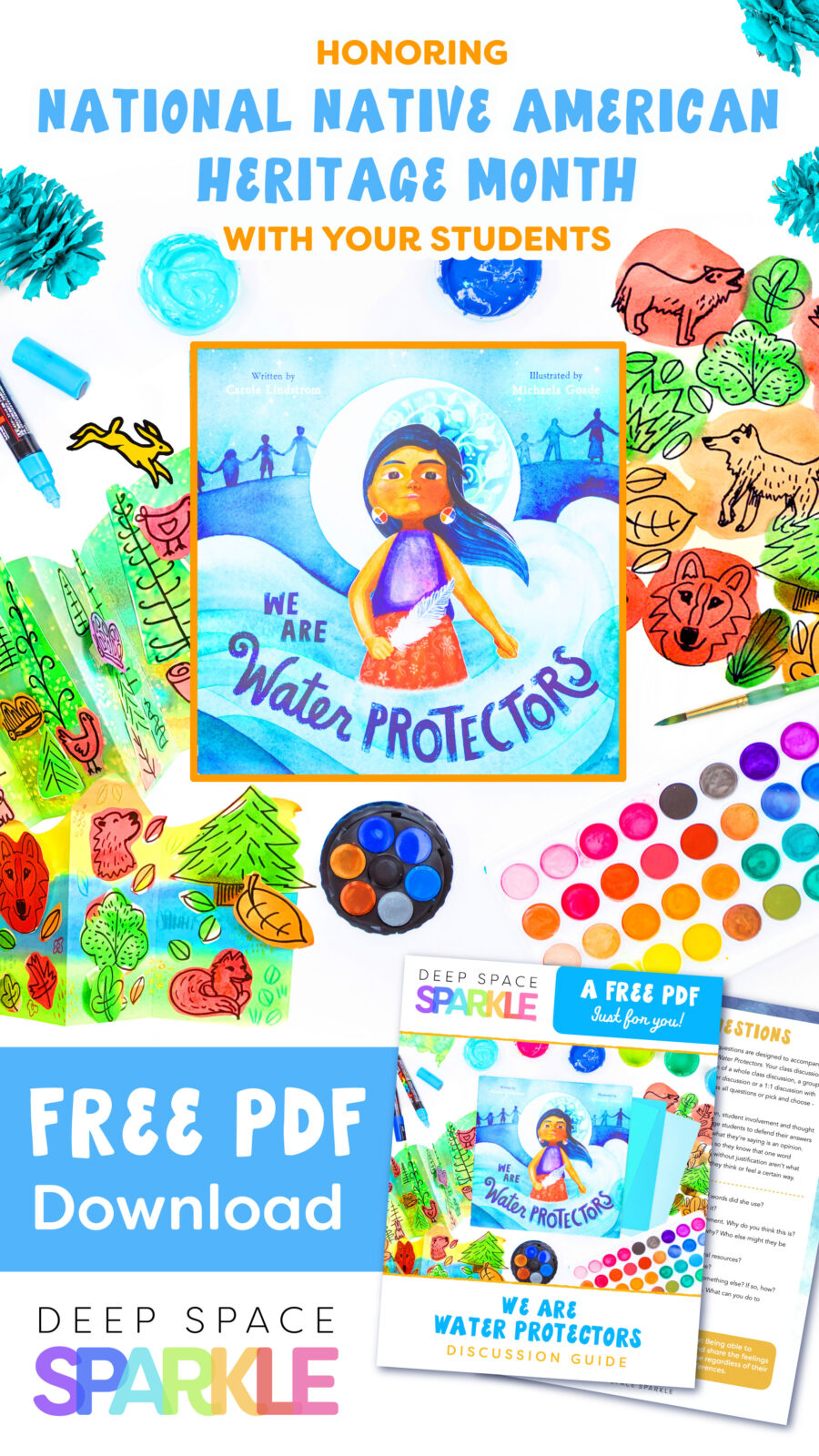


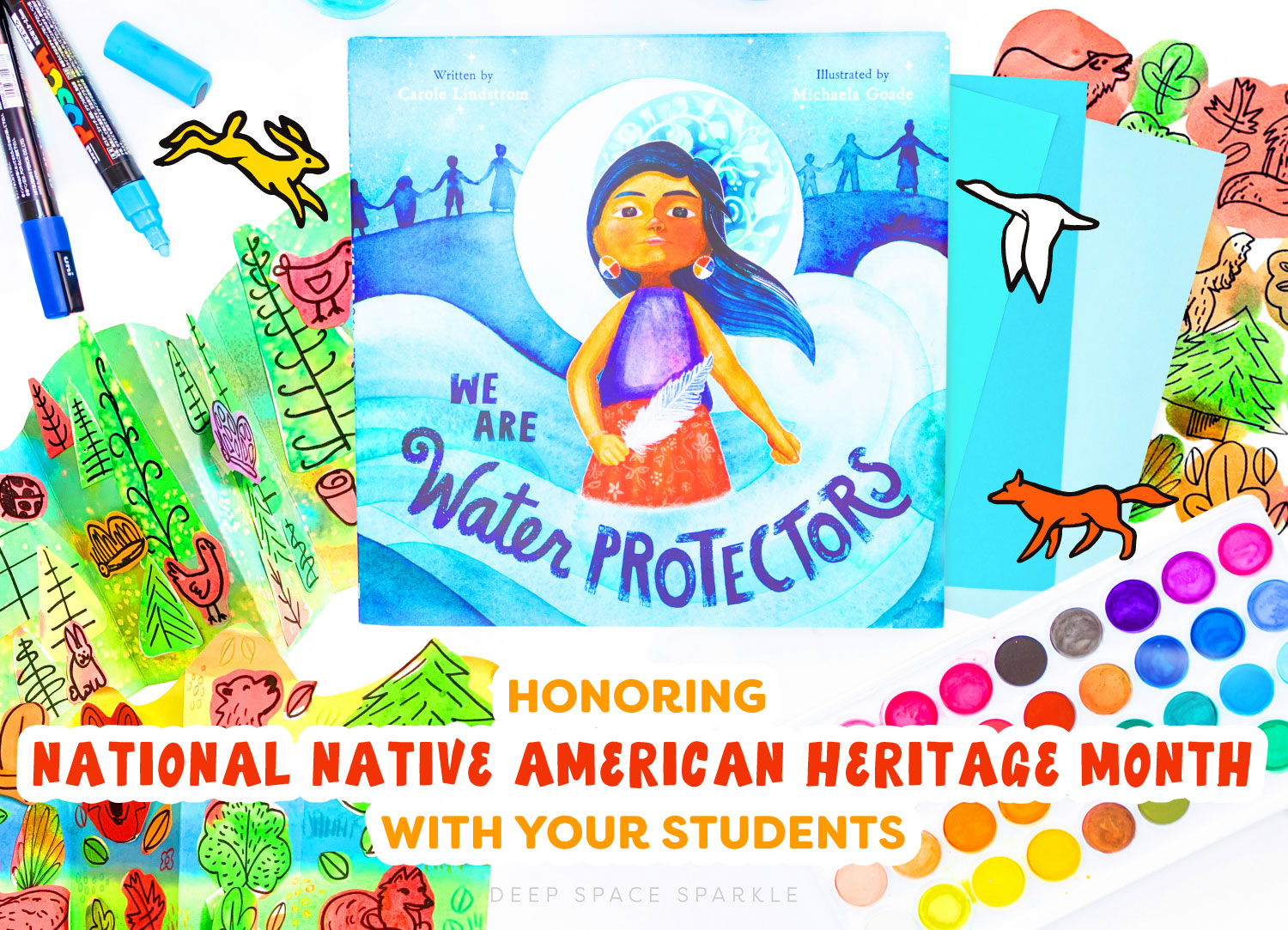












What a wonderful way to weave in so many important themes – Native American culture and their wisdom to preserve our earth and art principals of color and form. Thank you!
Fantastic !!!
Thank you. The children will love this project. They really like anything Native American.
Thank you for introducing us to this book! We have been supporters of the No DAPL movement from the start, but I had not heard of this book.
This illustrator is incredibly gifted. May I please ask how might one paint in a similar technique with the ‘whites’ or lighter areas that make such defined and bold statements? Is it mixed media or technique? Clueless. :/ Would love to help my kids try this in their pieces.
Any help/tips would be most appreciated.
Again, thank you for sharing something so beautiful and important. Would love to see this go absolutely viral in pursuit of resolution, balance, and unity.
Great resource, so thankful as always.
All to often we see non-Natives move to profit from us, so I love that this is a free resource! (I do hope that if “I Am A Protector” from the America the Great Bundle is based on the same book, that you’ll pull it from the paywall as well.) The questions included in this lesson are very thought provoking and respectful, as well. I think you’ve shown how non-Natives can respectfully honor and teach about us!
One thing I would like to see is that inbound links take you to other content that’s related to Native Americans or Indigenous peoples around the world. Ted Harrison’s landscapes are wonderful (and so are the lessons!) but he’s not Native and it would just be nice to see other content related to the title book or author. If you ever have time or the desire to chat I have a few ideas for you!
Hi Bridgette! This is Bethany from Customer Support. We are happy that you found our website. We have learned from you and your comment and are working on updating this page on the blog. We would be interested in continuing the conversation and will contact you by email for additional feedback if you are interested.
I love this thank you for the reminder ♥️♥️♥️
Very nice item!
I work with students for summer camp that are from Fort Berthold Their families are upset with “water protectors” because they survive and put their children through college from their oil. They wanted to share the wealth, but others from urban areas or land without oil, will not help them to harvest their natural resource from the un farmable land given to them by the FED. How can I bridge this gap?
Bright and beautiful lessons that never disappoint.
I like how this lesson addresses our environmental concerns, and can create discussion about it while also focusing on native american history.
Hello.
I am curious: is there an art lesson to accompany this book? I have downloaded the discussion questions.
Beautiful story. Is there an art lesson to go with this book?
Beautiful!
love the perspective of nature! keep calling us back to it!!